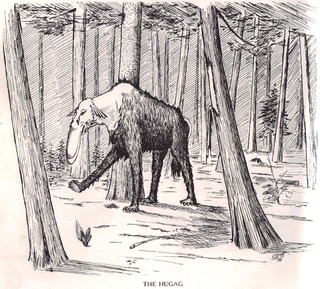 W
WIn North American folklore, fearsome critters were tall tale animals jokingly said to inhabit the wilderness in or around logging camps, especially in the Great Lakes region. Today, the term may also be applied to similar fabulous beasts.
 W
WJohn Chapman, better known as Johnny Appleseed, was an American pioneer nurseryman who introduced apple trees to large parts of Pennsylvania, Ontario, Ohio, Indiana, and Illinois, as well as the northern counties of present-day West Virginia. He became an American legend while still alive, due to his kind, generous ways, his leadership in conservation, and the symbolic importance he attributed to apples. He was also a missionary for The New Church (Swedenborgian) and the inspiration for many museums and historical sites such as the Johnny Appleseed Museum in Urbana, Ohio. The Fort Wayne TinCaps, a minor league baseball team in Fort Wayne, Indiana, where Chapman spent his final years, is named in his honor.
 W
WAntonine Barada, alternatively spelled Antoine Barada, was an American folk hero in the state of Nebraska; son of an Omaha mother, he was also called Mo shi-no pazhi in the tribal language. While Barada was an historic man, contemporary accounts of his prodigious strength helped establish him as a regional legend, in the mold of Paul Bunyan and Febold Feboldson. Barada's exploits have been counted as fakelore by historians.
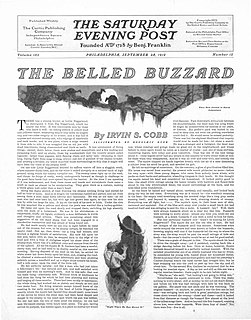 W
WThe belled buzzard is a fearsome critter in American folklore frequently cited as an omen of disaster by the sounding of its bell. The animal is otherwise depicted as an ordinary buzzard except with a bell affixed to it. The belled buzzard originated from actual accounts of turkey vultures being fastened with cow or sleigh bells. The belief that the belled buzzard was one continuous entity, and not multiple birds, was common, and the creature rose to prominence in the 1880s on through the turn of the twentieth century. Belled buzzard stories circulated principally throughout the southern United States, and it is the origin of the colloquialism "not enough sense to bell a buzzard."
 W
WBig Fish: A Novel of Mythic Proportions is a 1998 novel by Daniel Wallace. It was adapted into a film, Big Fish, in 2003 by Tim Burton. A musical adaptation starring Norbert Leo Butz premiered in Chicago in April 2013.
 W
WDaniel Boone was an American pioneer and frontiersman whose exploits made him one of the first folk heroes of the United States. Boone became famous for his exploration and settlement of what is now Kentucky, which was then beyond the western borders of the Thirteen Colonies. Despite resistance from American Indians, for whom Kentucky was a traditional hunting ground, in 1775 Boone blazed the Wilderness Road through the Cumberland Gap and into Kentucky. There he founded Boonesborough, one of the first English-speaking settlements west of the Appalachian Mountains. By the end of the 18th century, more than 200,000 people entered Kentucky by following the route marked by Boone.
 W
WJames Felix Bridger was an American mountain man, trapper, Army scout, and wilderness guide who explored and trapped in the Western United States in the first half of the 19th century. He was from the Bridger family of Virginia, English immigrants that had been in North America since the early colonial period.
 W
WWilliam Frederick "Buffalo Bill" Cody was an American soldier, bison hunter, and showman. He was born in Le Claire, Iowa Territory, but he lived for several years in his father's hometown in modern-day Mississauga, Ontario, Canada, before the family returned to the Midwest and settled in the Kansas Territory.
 W
WPaul Bunyan is a giant lumberjack and folk hero in American and Canadian folklore. His exploits revolve around the tall tales of his superhuman labors, and he is customarily accompanied by Babe the Blue Ox. The character originated in the oral tradition of North American loggers, and was later popularized by freelance writer William B. Laughead (1882–1958) in a 1916 promotional pamphlet for the Red River Lumber Company. He has been the subject of various literary compositions, musical pieces, commercial works, and theatrical productions. His likeness is displayed in several oversized statues across North America.
 W
W"The Celebrated Jumping Frog of Calaveras County" is an 1865 short story by Mark Twain. It was his first great success as a writer and brought him national attention. The story has also been published as "Jim Smiley and His Jumping Frog" and "The Notorious Jumping Frog of Calaveras County". In it, the narrator retells a story he heard from a bartender, Simon Wheeler, at the Angels Hotel in Angels Camp, California, about the gambler Jim Smiley. The narrator describes him: "If he even seen a straddle bug start to go anywheres, he would bet you how long it would take him to get to wherever he going to, and if you took him up, he would foller that straddle bug to Mexico but what he would find out where he was bound for and how long he was on the road."
 W
WCloudy with a Chance of Meatballs is a children's book written by Judi Barrett and illustrated by Ron Barrett. It was first published in 1978 by Atheneum Books, followed by a 1982 trade paperback edition from sister company Aladdin Paperbacks. It is now published by Simon & Schuster. Based on a 2007 online poll, the National Education Association listed the book as one of its "Teachers' Top 100 Books for Children". It was one of the "Top 100 Picture Books" of all time in a 2012 poll by School Library Journal.
 W
WCordwood Pete is a fictional character who was the younger brother of legendary lumberjack Paul Bunyan. While Paul Bunyan is said to have been a giant of a man, his younger brother Peter Bunyan was a mere 4 feet 9 inches (1.45 m) in height. Pete's growth was apparently stunted by the fact that he could never get enough flapjacks at the breakfast table. Paul ate everything in sight.
Mike Fink, called "king of the keelboaters", was a semi-legendary brawler and river boatman who exemplified the tough and hard-drinking men who ran keelboats up and down the Ohio and Mississippi Rivers.
 W
WThe Goofus bird is a mythical, backwards-flying bird, originating in lumberjack folklore in North America. It is also known variously as the Filla-ma-loo bird or the Flu-fly bird.
 W
WJohn Henry is an American folk hero. An African American, he is said to have worked as a "steel-driving man"—a man tasked with hammering a steel drill into rock to make holes for explosives to blast the rock in constructing a railroad tunnel.
 W
WJames Butler Hickok, better known as "Wild Bill" Hickok, was a folk hero of the American Old West known for his life on the frontier as a soldier, scout, lawman, gambler, showman, and actor, and for his involvement in many famous gunfights. He earned a great deal of notoriety in his own time, much of it bolstered by the many outlandish and often fabricated tales he told about himself. Some contemporaneous reports of his exploits are known to be fictitious, but they remain the basis of much of his fame and reputation.
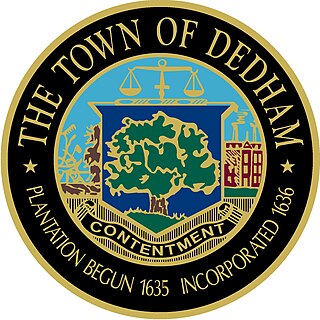 W
WSam Hide is a historic or apocryphal character in the folklore of New England, used in the folk saying "to lie like Sam Hide". There is no record of the death of a Sam Hide in the records of Dedham, Massachusetts though he is said to have died in 1732, however Sam Hide is noted at age 105 at Dedham as being a sachem, chief or sagamore who first and last were, to a greater or less degree, land-holders, and leaders of the multifarious tribes of New England.
 W
WDoctor Thomas Hinde was Northern Kentucky's first physician, a member of the British Royal Navy, an American Revolutionary, personal physician to Patrick Henry, and treated General Wolfe when he died in Quebec, Canada.
 W
WThomas Spottswood Hinde was an American newspaper editor, opponent of slavery, author, historian, real estate investor, Methodist minister and a founder of the city of Mount Carmel, Illinois. Members of the Hinde family were prominent in Virginia, Kentucky, Ohio, and Illinois. His sons Charles T. Hinde became a shipping magnate and Edmund C. Hinde an adventurer. He was the father-in-law of judge Charles H. Constable.
 W
WFrank T. Hopkins was an American professional horseman who at one time performed with the Ringling Brothers Circus. He was a legendary long-distance rider, who won 400 races, and was recognized by his contemporaries as supporting the preservation of the mustang.
 W
WIn American folklore, the hugag is a fearsome critter resembling a large terrestrial mammal, quadruped, with an extensive upper-lip, preventing it from grazing, and joint-less legs preventing it from lying down.
 W
WMose Humphrey was a member of Fire Company 40 in New York City in the 19th century, and the inspiration for the folk hero character "Mose the Fireboy".
 W
WMartha Jane Cannary, better known as Calamity Jane, was a well-known American frontierswoman, sharpshooter, and raconteur. In addition to many exploits she was known for being an acquaintance of Wild Bill Hickok. Late in her life, she appeared in Buffalo Bill's Wild West show and at the 1901 Pan-American Exposition. She is said to have exhibited compassion to others, especially to the sick and needy. This facet of her character contrasted with her daredevil ways and helped to make her a noted frontier figure. She was also known for her habit of wearing men's attire.
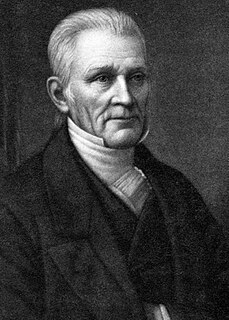 W
WRobert Gibbon Johnson, also known as Colonel Johnson, was an American gentleman farmer, historian, horticulturalist, judge, soldier and statesman who lived in Salem, New Jersey. He is especially renowned for the apocryphal story that he publicly ate a basket of tomatoes at the Old Salem County Courthouse in 1820 to demonstrate that they were not poisonous, as was supposedly commonly thought at the time. He was a keen antiquarian and wrote a history of Salem – An Historical Account of the First Settlement of Salem, in West Jersey – which was published by Orrin Rogers in 1839.
 W
WJohn Luther "Casey" Jones was an American railroader who was killed when his passenger train collided with a stalled freight train at Vaughan, Mississippi.
 W
WJohnny Kaw is a fictional Kansas settler and the subject of a number of Paul Bunyan-esque tall tales about the settling of the territory.
 W
WThe Kilkenny cats are a fabled pair of cats from County Kilkenny in Ireland, who fought each other so ferociously that only their tails remained at the end of the battle. Often the absurd implication is that they have eaten each other. "P. M'Teague" (1840). Dickens, Charles; Ainsworth, William Harrison; Smith, Albert (eds.). "Watty Flaherty; Chapter I". Bentley's Miscellany. London: Richard Bentley. VII: 391–404: 395. Retrieved 8 November 2019. A Kilkenny cat!" exclaimed Mr. O'Dowd. "Why they eat one another up! </ref> In the nineteenth century the Kilkenny cats were a common simile for any conflict likely to ruin both combatants. Kilkenny cat is also used more generally for a fierce fighter or quarrelsome person. These senses are now rather dated. In the later twentieth century the motif was reclaimed by Kilkenny people as a positive symbol of tenacity and fighting spirit, and "the Cats" is the county nickname for the Kilkenny hurling team. The original story is attested from 1807 as a simple joke or Irish bull; some early versions are set elsewhere than Kilkenny. Nevertheless, theories have been offered seeking a historical basis for the story's setting.
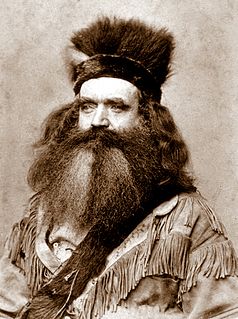 W
WSeth Kinman was an early settler of Humboldt County, California, a hunter based in Fort Humboldt, a famous chair maker, and a nationally recognized entertainer. He stood over 6 ft (1.83 m) tall and was known for his hunting prowess and his brutality toward bears and Indian warriors. Kinman claimed to have shot a total of over 800 grizzly bears, and, in a single month, over 50 elk. He was also a hotel keeper, saloon keeper, and a musician who performed for President Lincoln on a fiddle made from the skull of a mule.
 W
WNat Love was an African-American cowboy and former slave in the period following the American Civil War. His exploits have made him one of the most famous black heroes of the Old West.
 W
WJoe Magarac is a pseudo-legendary American folk hero. He is presented to readers as having been the protagonist of tales of oral folklore told by steelworkers in Pittsburgh, Pennsylvania, which later spread throughout the industrial areas of the Midwestern United States.
 W
WA Million Fish ... more or less is a 1992 children's picture book by Patricia McKissack. It is about a boy of the bayou, Hugh Thomas, who has a fishing adventure.
 W
WBaron Munchausen is a fictional German nobleman created by the German writer Rudolf Erich Raspe in his 1785 book Baron Munchausen's Narrative of his Marvellous Travels and Campaigns in Russia. The character is loosely based on a real baron, Hieronymus Karl Friedrich, Freiherr von Münchhausen.
 W
WPecos Bill is a fictional cowboy in stories set during American westward expansion into the Southwest of Texas, New Mexico, Southern California, and Arizona. These narratives were invented as short stories in a book by Edward S. O'Reilly in the early 20th century and are considered to be an early example of fakelore. Pecos Bill was a late addition to the "big man" idea of characters, such as Paul Bunyan or John Henry.
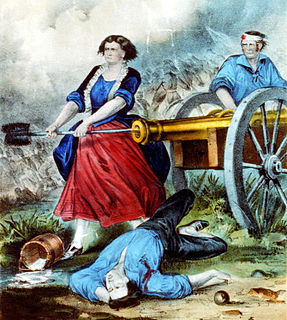 W
WMary Ludwig Hays was a woman who fought in the American War of Independence at the Battle of Monmouth. The woman behind the Molly Pitcher story is most often identified as Hays, but it is likely that the legend is an amalgam of more than one woman seen on the battlefield that day.
 W
WTales from Gavagan's Bar is a collection of fantasy short stories by American writers L. Sprague de Camp and Fletcher Pratt, illustrated by the latter's wife Inga Pratt. It was first published in hardcover by Twayne Publishers in 1953; an expanded edition rearranging the contents and adding pieces not in the first was published in hardcover by Owlswick Press in June 1978. The original illustrations were retained in this edition. It was subsequently issued in paperback by Bantam Books in January 1980. An e-book edition was published by Gollancz's SF Gateway imprint on September 29, 2011 as part of a general release of de Camp's works in electronic form. The collection has also been published in German.